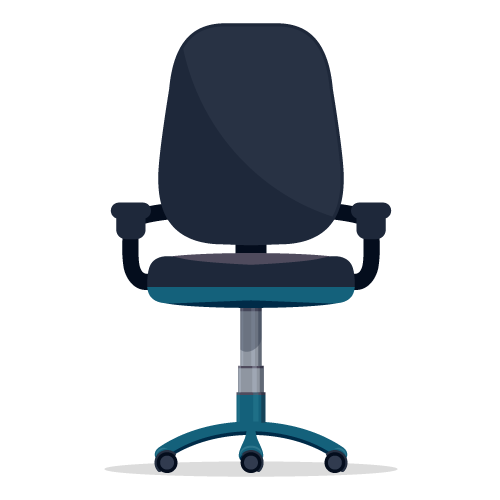Think you’ll be told to just sit up straight? Think again.
Our assessments are run by chartered physiotherapists trained in ergonomics, who look at an employee’s presentation, desk surroundings and their work lifestyle. This information gives us information to create and provide programmes in order to improve both their work position and habits. If there is an issue, we’ll be able to identify the problem, advising or advocating on a change for the better.
Click to read more
Our focus is on educating employees regarding the issues they come up against, and providing solutions to them in real time.
The latest and most up-to-date information is what we keep at the forefront of our practices, and we’ll make this research as easy to understand as possible. The exercises and rehab we provide will be based on the most recent research, and adapted to the individual’s own work life.
An employee working a 40-hour week will work an estimated 90,000 hours during their life – 67,500 of which will be spent sitting. This is a pretty long time to be sitting incorrectly.
The evidence to suggest a more comprehensive approach to the workplace is required was provided by the European Agency for Safety & Health At Work (2010), which showed us that 24.7% of workers experience backache, 22.8% experience muscular pains, and a huge 45.5% reported working in painful or tiring positions.
We’re using technology to work harder, so why not to work smarter? The data shows that our bodies need us to.
Ergonomics & Physiotherapy: A Perfect Match
Ergonomics and physiotherapy are closely related, and share many similar principles and overlapping ethoses; both are designed to improve function, prevent injury and increase quality of life.
Click to read more
With a growing number of employee populations sitting at computers, the need for both ergonomics and physiotherapy at workstations will only continue to grow.
The amount of tasks required to be completed by computer has increased sitting markedly over the recent decades, making the workplace a key setting in which to measure and implement changes in order to reduce the number of hours spent seated.
New challenges require a new approach, so how do we maximise performance, increase comfort and cognitive capacity, whilst improving emotional intelligence? In order to implement a successful approach to sustained high performance, we must take a holistic view and consider the person as a whole, rather than considering issues as isolated.
Role of Ergonomics
We must take a holistic approach, as ergonomics takes into account the physical, organisational & cognitive components of the workplace. Simply put: the task must be fit to the person in terms of their body.
Benefits include
- Reduced costs to employer in long run
- Increased productivity
- Improved employee morale
- Enhanced quality of work
Role of Physiotherapy
- Prevent injury
- Maintain health
- Improve fitness and wellbeing
- Encourage movement
Workers must be trained to:
- Perform at high levels over longer time frames
- Train in the same systematic, multilevel way that athletes do
If not trained properly:
- Employees will not reach their full potential
- Cause cost over time to themselves, to their co-workers, and to their employers
Exposure over time to one or a combination of risk factors, both ergo and/or physio, can lead to issues if problems are not addressed.




